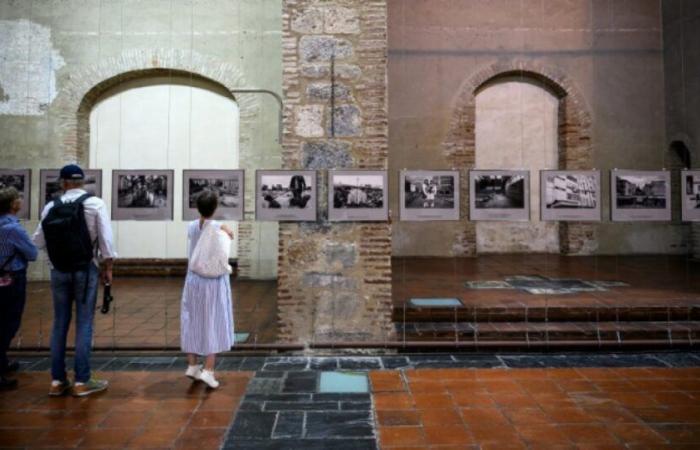Visa pour l’image, a global photojournalism event in Perpignan (Pyrénées-Orientales), presents current events but also zooms in on other realities, with the 2024 edition offering a look at different faces of exclusion, focusing on the margins and walls that scar the planet.
The festival does not traditionally have a main theme, but among the 26 professionals exhibiting until September 15 in the centuries-old buildings of the old Catalan city, a large part gives voice through images to those who do not have one, to the excluded and rejected by the world.
“This part of the population has no say in the matter,” summarizes Pierre Faure for AFP, who presents “France périphérique”, a black and white photo project carried out since 2015 on the “small peasantry in the process of disappearing” or those abandoned in the former industrial basins.
He says he is “extremely happy” to be exhibited in Perpignan “because in fact, it is a job that is difficult to present”.
“I have a lot of trouble doing exhibitions with this work, I’ve had two publications in ten years,” he explains.
Paolo Manzo, an Italian photographer who shows in “The Invisible City” the daily nightmare of the inhabitants of the dilapidated and abandoned neighborhoods of the Neapolitan outskirts, shares the same observation: “Italy, Naples does not want to show anything of these problems.”
– Power of photography –
For someone who grew up and continues to live in these neighborhoods, being shown at Visa is therefore “sending a message to Italy and trying to change things.”
“I live in hope and my hope is that my photographic work will one day be useful,” he says. A feeling that Romanian photographer Mugur Varzariu assures us he experiences.
“Photography can change things,” he says. The proof? By photographing the Roma neighborhood of Baia Mare, a small town in northwestern Romania, which the mayor had partially isolated by building a wall, he managed to obtain its destruction, after a long legal battle.
“Voices Rising Behind the Wall” is the name of his exhibition in Perpignan and it “gives me”, he says, “the strength to tell myself that I am doing what I have to do as a photographer”.
Another continent, other walls: those photographed by Venezuelan Alejandro Cegarra, who for several months accompanied migrants crossing Mexico on their way to the United States.
Before coming up against the physical wall of the border between the two countries, they must cross another, more symbolic one, made up of all the administrative, police and psychological barriers installed in the very heart of Mexico to prevent them from completing their quest.
The starting point for the photographer’s work was “indignation”, especially, he says, “because my wife and I lived through this situation”.
– “Honor these people” –
“A big part of the project was to take pictures to honor these people” because, explains the man who left Venezuela in 2017: “it’s often the worst days, weeks, months of people’s lives that end up in the photos.”
“I don’t want to be another part of their trauma,” says the journalist whose long-term reporting was awarded a World Press.
From these United States that make the migrants photographed by Alejandro Cegarra dream, Visa has retained the fractures and scars that exclusion also leaves there.
In Venice Beach, California, Karen Ballard captured the reverse side of the postcard, and in Troy, New York, Brenda Ann Kenneally, originally from the same neighborhood, followed over many years the journey of several families kept in a miserable fate by a system that she denounces.
“America as a land of opportunity is a lie, propaganda to keep those at the bottom where they are and to continue to make them believe that if they don’t subscribe to this idea, they have missed out on something or are irresponsible,” she said.
And in this America in decline shown in Perpignan, the most tragically spectacular scar is perhaps that left by “tranq”, a devastating new opioid whose visible ravages in the Kensington district of Philadelphia are the subject of an impressive report by photographer Gaël Turine.
Poverty takes on an almost inhuman face, this “zombie drug” transforming those who consume it into disjointed silhouettes.






